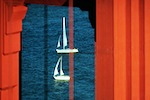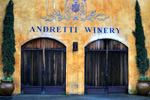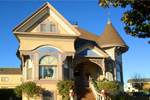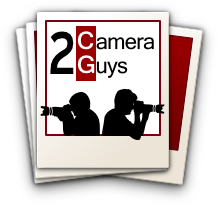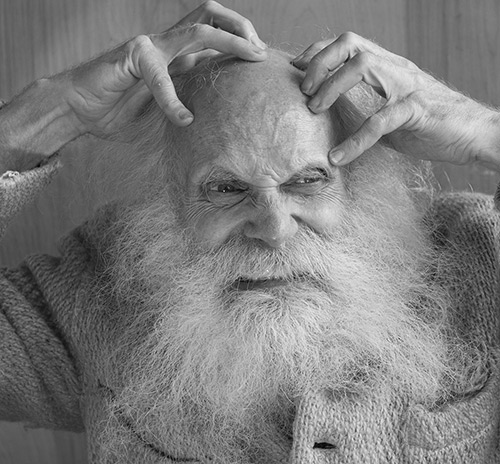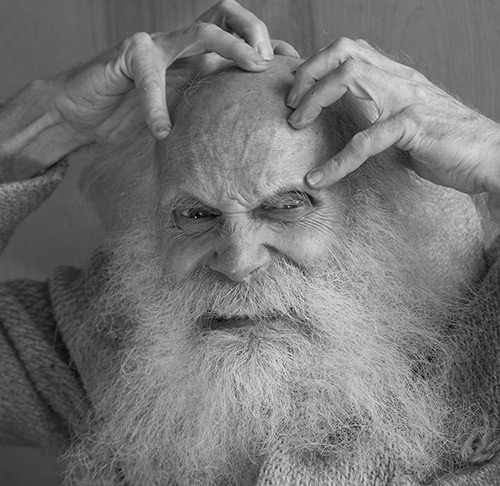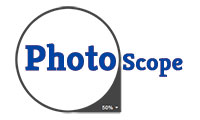Nikon D800 vs Canon 5D Mark III
- The Shootout
- Nikon D800 Review
- Canon 5D Mark III Review
Nikon D800/D800E Review
Months ago, when the first rumors of the yet-to-be-released Nikon D800 surfaced, a lot of lurkers were in disbelief that Nikon would actually produce a 36MP DSLR. The common wisdom was that even though it had been over three years since the 12MP D700 was introduced, a tripling of megapixels on this long overdue D800 was just not Nikon-like.
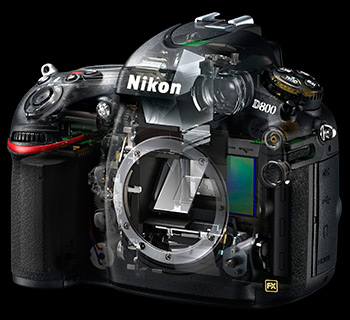
But as those mega-megapixel whispers became louder and more confirmed, doubts arose about stuffing 36 million pixels on to a full frame sensor. The reaction was not surprising since over the last few years, photographers have been schooled by engineers to believe that only so many pixels can be shoehorned on to a sensor before you run into problems that would deteriorate image quality.
Now that the Nikon D800 has come out of the shadows and is in the wild, tests are showing that by golly, you can pack all those tiny pixels onto a full frame sensor and attain the highest image quality marks for any full frame DSLR, even surpassing some medium format cameras.
The repercussions to that news - let's just say that the Nikon D800 has caused multiple cases of pixel envy.
Still, others will remark, "Who needs 36MP images?" or "Who can actually see the difference between a 36MP shot and a 22MP one?" These questions have merit and will be addressed later.
For now, after a neck and neck race and a photo finish, the Nikon D800 just edges out the Canon 5D Mark III and wins the 2 Camera Guys Award for Best Full Frame DSLR Camera.
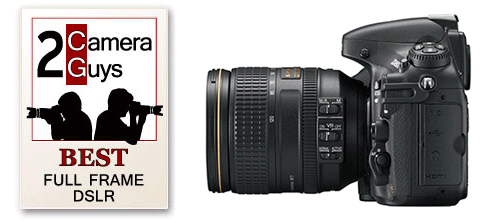
What's Hot about the Nikon D800
- Top marks for resolution and image quality
- 36MP CMOS full frame sensor
- Ample control buttons that are reasonably laid out
- Fast and accurate 51 point autofocus system
- Comfortable hand grip and good overall balance
- Solid construction
- 1080p video at multiple frame rates
- Uncompressed 1080p video output that can be recorded or monitored
- Dual SD/CF card slots
- Built-in flash
What's Not So Caliente about the Nikon D800
- Only 4 fps continuous full resolution shooting
- Should shoot RAW files to obtain full image quality
- Notable noise at ISOs over 6400
- Vibration reduction is not integrated in the camera
- Full resolution 36MP files strain less powerful computers and gobble hard drive space
- Live View focus is slow
- No built-in GPS
Design
The first impression when you hoist the Nikon D800 is that it's solidly built. Considering its heft, (the body alone is almost two pounds, add on a telephoto lens and you have an instant barbell), the camera feels comfortable in your hand.
If you have ever used a Nikon DSLR, the design of the D800 should seem familiar. To the delight of those who hate to dig through menus to change settings, there are real, tactile buttons and dials galore and for the most part, the layout is sensible.
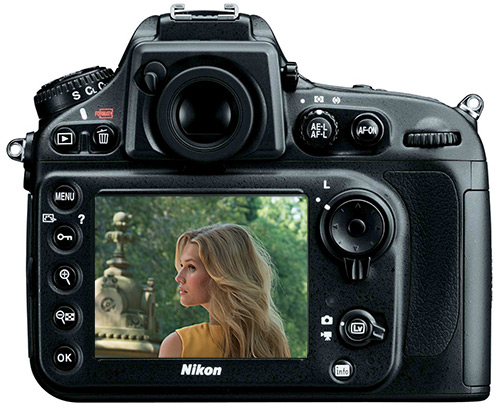
Compared to the D700, most of the usual suspects are still in the same place. But camera designers are born to tweak, and happily some changes are a definite improvement, like the ones to the Live View feature. While others, like the alteration to the AF switch on the front, are head scratchers.
Even if you have been weaned on Nikons since you were a pup photographer, be ready to work your way through the manual. The D800 offers enough new features and changes to old ones that it's worth a few long nights of study with camera in hand.
Image Quality
The image quality obtainable from the Nikon D800E is the best of any full frame DSLR currently on the market. The D800 is right behind. Both test better than some much more expensive medium format cameras.
To assist you in reaching the very peak of performance, Nikon has produced a Technical Guide which states, "Realizing the full potential of a camera with over 30 million pixels involves a thorough appreciation of bokeh and blur, careful selection of settings and of tools (such as lenses and tripods), and working with the best possible subjects." The Guide is suggested reading.
Of course, all those megapixels can adversely effect noise. The differences between the 22MP Canon 5D Mark III and this Nikon are negligible up to about ISO 3200 and then Team Canon has an advantage to crow about.
Before leaving this discussion about resolution and noise, I must admit that even though test patterns can provide empirical data, sometimes I feel like shouting, "Ladies and Gentlemen, please take out your magnifying glasses." In many comparisons between the 5D and the D800, the differences - even though they exist - are not easily visible from normal viewing distances.
Handheld photo was shot with Nikon D800, ISO 1250, Nikkor 70-300mm @85mm, f/5.6, 1/125 s.
Converted in Camera Raw 7.1 to Grayscale, Default sharpening.
Converted in Camera Raw 7.1 to Grayscale, Default sharpening.
And if you can't see them without straining, are those differences significant? In fact, either camera in the hands of a good photographer will yield admirable images. Given to a less talented shooter, the resulting photos may be highly detailed but less inspiring.
Judge for yourself. If you go to the PhotoScope comparison of the two cameras (at ISO 200) and move the Scope (at 100%) over the top portion for the test image, you may discover that certain parts of the image seem sharper with the D800 and others look crisper with the Canon 5D.
And if you are a sharpness freak and neither is satisfactory, you can take either image into Photoshop and artificially sharpen it to the razor's edge of surreal.
Features
Beyond the headlining sensor, the major added feature compared to the ancient D700 is video. Nikon has been providing video in its DSLRs in the last few years and the D800 borrows a lot from the more expensive D4.
Of course, nowadays, 1080p capabilities in 24, 25 and 30 fps is de rigueur. Regretfully, Nikon decided not to add a 50 or 60 fps rate, which would allow a basic slow motion function.
More importantly for seasoned videographers, the D800 offers an uncompressed video stream through an HDMI out. For shooting in a studio, the output can also be sent to a bigger monitor, which is much more preferable than squinting at the camera's 3.2 inch screen.
Though the autofocus system only offers 51 points instead of the 5D's 61, focusing is nimble and accurate when shooting with the mirror down. In Live View and Video mode, the D800 changes to a Contrast Detection mode, (instead of Phase Detection), and focusing is slower.
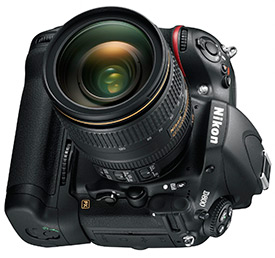
The D800's built-in flash is much appreciated. The Canon does not have one. It may not be the subtlest light source, but a pop-up flash can definitely come in handy.
When it comes to integrated features, the real question is when will Nikon and Canon begin to build Wi-Fi and GPS abilities into their high end cameras? The add-on accessories that provide these options work, but who wants dongles flapping out the sides of their cameras.
Finally, if you often shoot in Portrait mode and you don't want to strike that chicken wing pose with your elbow flapping in the air, consider purchasing the MB-D12 battery grip.
Not only does it give you the option of spare battery power, it also offers a second shutter release which is perfect when holding the camera sideways.
Verdict
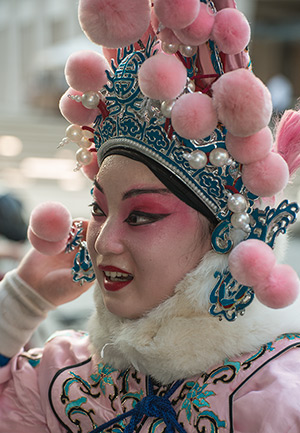
It took Nikon over three years to upgrade the D700, but the painful wait was worth it. The Nikon D800, with its 36MP sensor and medium format image quality, leapfrogged over the competition.
The $3000 price tag, though not inconsequential, seems like a bargain when you consider its features and performance.
If you want to squeeze every drop of sharpness out of that sensor, spend the extra $300 and buy the D800E.
You may have to contend with a little bit of moire patterning, but if detail is critical to you, the 800E is the ticket.
On the flip side, the D800, with a paltry 4 fps, is not suited for the sports photographer.
And with its huge image files and demands for disciplined technique, this Nikon is more camera than most need.
But if you are ready to commit to the D800, it could be the beginning of a beautiful friendship.
Nikon D800 Photo Gallery
More about the Nikon D800
Reader Comments(4 comments)
|
Posted Mar 27, 2013 9:43:38 PM
|
|
By Amit Dhamija |
Post a Comment Alert Moderator |
|
Posted Oct 5, 2012 4:17:55 AM
|
|
By kayati |
Post a Comment Alert Moderator |
|
Posted Jul 29, 2012 5:53:25 PM
|
|
By The not so CanNik guy |
Post a Comment Alert Moderator |
Look at the d4 or d3s, both have 16 and 12mp respectively. D800 has 36mp so there isn't really a need for that many pixels. Drop it down to DX mode With grip and you get 6fps. Most sports require a long zoom anyways so you still get 16mp added x1.5 zoom @ the same lens speed. Eg. 70-200 f2.8 becomes 105-300 f2.8. If wider is needed just switch back to fullframe. That's how I took this camera to be.


